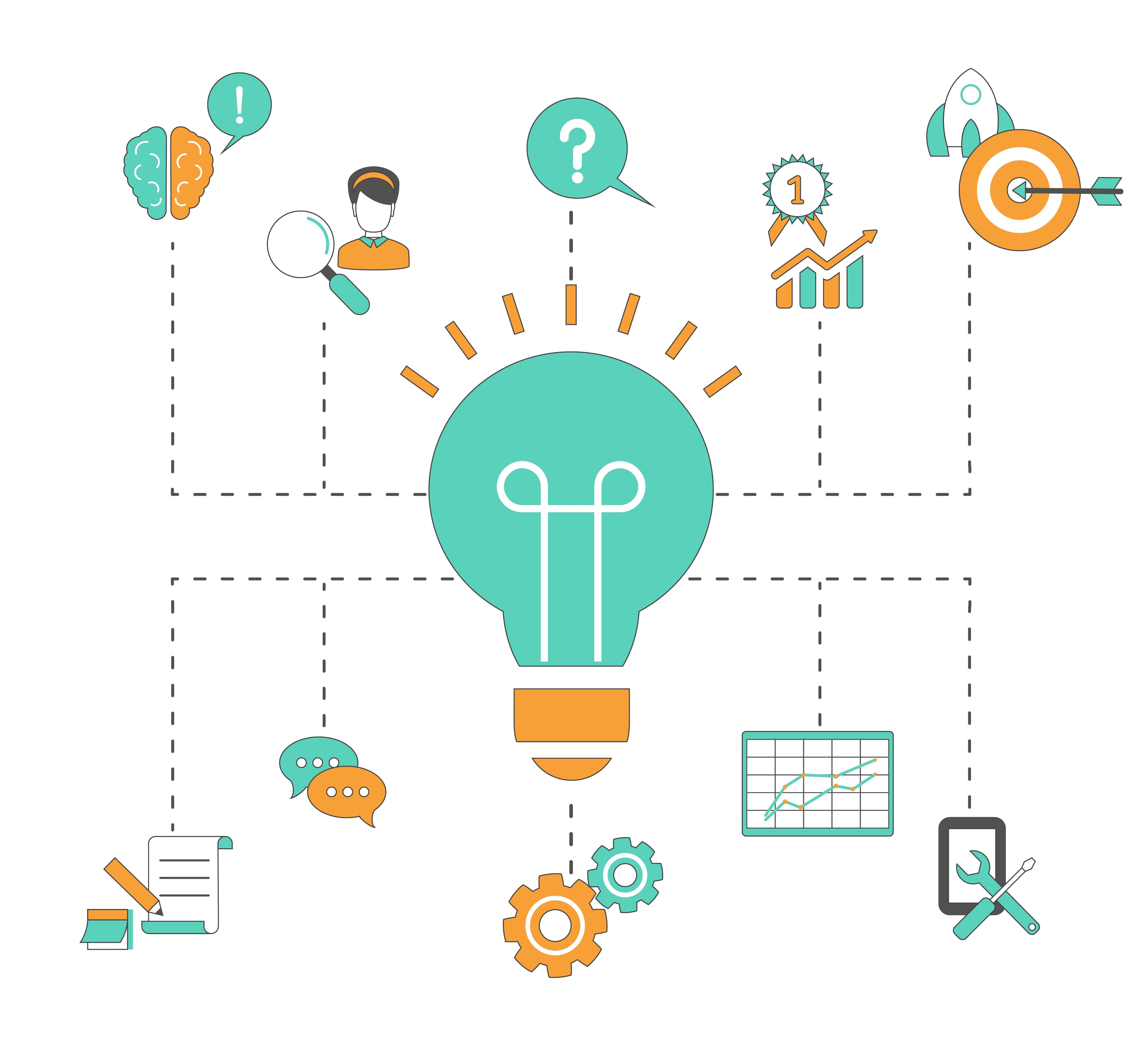
When you hear the word "product," what do you think of? If you're like most people, you think of the end result of some kind of manufacturing process. Whether it's a digital product, like an e-book or an app, or a physical product like a car or a pair of shoes, the concept of product thinking has traditionally been focused around "things."
But, what if we expanded the idea of what a product is to mean your impact on the world? So, if you've got a call center, your product experience is the
service you provide.
Touted as the core of the new economy, "product thinking" refers to a holistic view of how brands should approach product development. It encompasses the technical realities, business drivers, market forces and marketing opportunities that the product team needs to take into consideration. All successful products exist at the intersection of marketing (marketability), engineering (feasibility strategy), UX (desirability) and viability. Managing the complexity of these four quadrants is necessary for the creation of a truly successful product.
Project thinking versus product thinking
Traditionally, work has been divided into "projects" and then activities are organized around the delivery of those projects. The focus of project thinking is delivery. Whether you're delivering a couch or a computer program, it's about dividing the delivery of that item into segments and then predicting how long it will take to deliver that segment. Because of this, the measurable deliverable becomes a timeline and schedule. You're evaluated as much on when and how you deliver the product as you are by the product itself and its level of quality.
Product thinking flips this around. Rather than thinking of the timelines and deliverable dates, product thinking focuses on the goal we want to achieve or the job to be done.
Let's say that a company wants to produce a series of technical manuals that outline a manufacturing process. If you think of the technical manual in terms of project thinking, then you'd set a deadline for the creation of the outline, the chapters, the completion of the rough draft, the revisions and editing. It's about establishing a plan for the execution of the technical manual and then sticking to that plan.
If you look at the creation of the technical manual in terms of product thinking, however, you'll approach it differently. It becomes a matter of looking at how the technical manual will be used and what problem it's trying to solve. Because you're less focused on dates and deliverables, you might want to interview some end users and get their ideas on what they want the manual to contain. If something emerges that takes the manual in a different direction than had been originally envisioned, it's not a problem. You can better take into account changes, problems and roadblocks.
What are the pros and cons of product thinking?
Of course, we're not saying that project thinking has no place. There are pros and cons for each approach. In fact, there is always an element of project management, even when using product thinking. It's not that you never use timelines or dates, but that they aren't the primary focus.
One of the biggest "cons" of product thinking is getting people onboard. We've all been trained to think in terms of project management. It feels comfortable to have a sense of certainty as to when a project will be completed. Some folks are more comfortable with ambiguity than others.
The biggest "pro" of product thinking, though, is that it allows for a better outcome. With project thinking --especially in a large organization -- one delay or setback can ruin the entire plan. In product thinking, a delay or setback is simply an iteration in the execution of the outcome you're trying to achieve.
Why brands and digital marketers should transition to the product thinking paradigm
Perhaps the greatest reason why brands and digital marketers should transition to the product thinking paradigm is so that they can stay lean and agile. More and more companies are jumping on the product thinking bandwagon, and it leads to more efficient delivery of solutions. If your company is still focused on timelines and milestones, it becomes like the story of the tortoise and the hare. You're plodding along meeting each milestone in order, and the hare is running around the obstacles, creating a new path based on what it finds in the road.
The challenge, of course, lies in being able to discern when it matters to stick to schedules and budgets and when it's better to be flexible in those areas. In each instance, one has to ask, "Why are we doing this?" If holding to a date or a milestone is in service of accountability to budgets and stakeholders, then it's necessary. If it's because "we've always done it this way," or to mitigate risk, then it might be time to step back and take a bigger-picture view.
Another way of looking at it is the term "means/ends inversion." Often we become so focused on the means to the end, or "how" we are doing something, that we forget why we are doing it in the first place. If you're so focused on getting an A in the class that you don't learn the material unless it's going to be on the test, you're engaged in project thinking. If you allow your natural curiosity and love of the subject to drive your learning, you're in the flow of product thinking. And getting the outcome you want is what product experience is all about.




